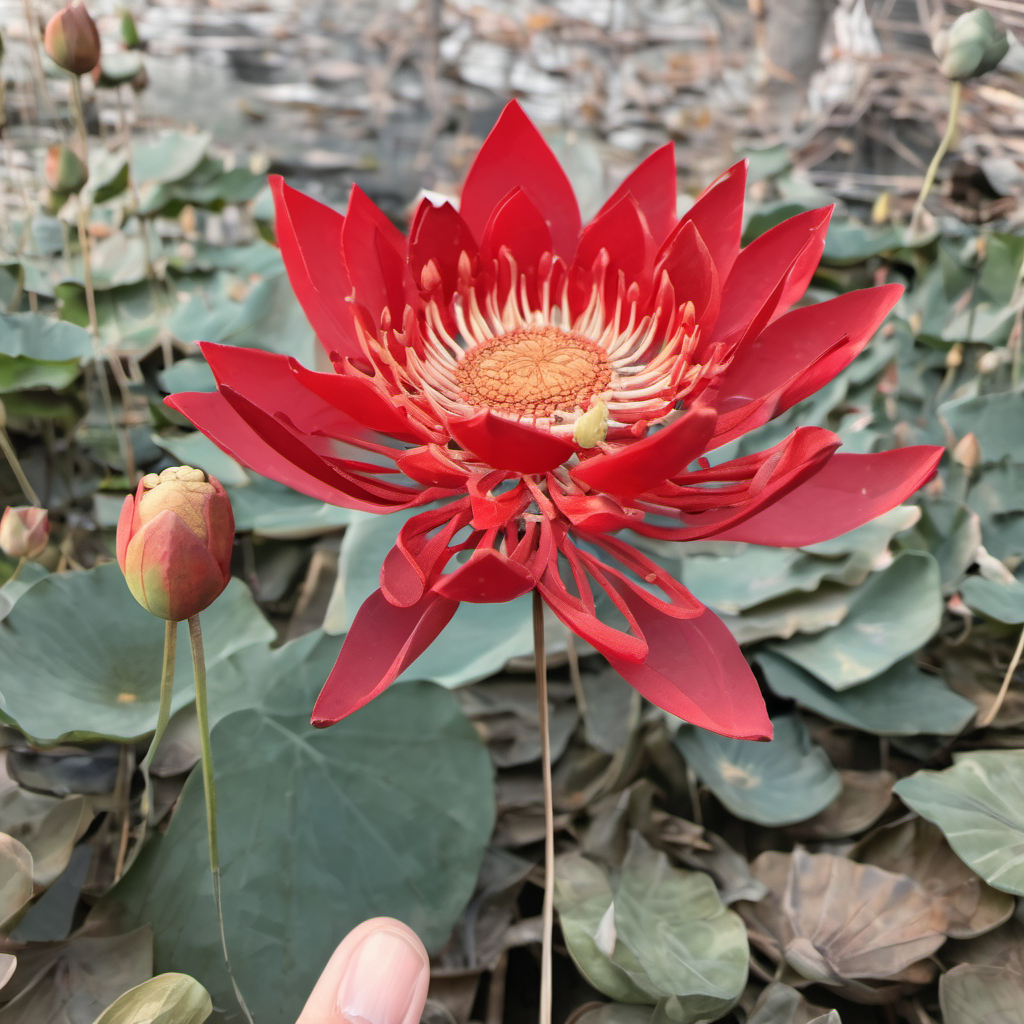Exploring the Symbolism of Red Lotus Flowers

Delve into the deep symbolic meanings associated with red lotus flowers in various cultures and religions.
The Origin of Red Lotus Flowers
Red lotus flowers have a rich and fascinating history that dates back centuries. The exact origin of these beautiful flowers is uncertain, but they are believed to have originated in Southeast Asia, particularly in countries like India, Thailand, and Sri Lanka. These regions are known for their lush and vibrant landscapes, making them the perfect environment for lotus flowers to thrive.
In ancient times, red lotus flowers were often associated with creation myths and legends. They were believed to have emerged from the primordial waters, representing the birth of life and the beginning of the world. This symbolism is still prevalent in many cultures today.
Red Lotus Flowers in Hinduism and Buddhism
In Hinduism and Buddhism, red lotus flowers hold great spiritual significance. They are often associated with deities and are considered sacred symbols of enlightenment and purity.
In Hinduism, the red lotus is closely associated with the goddess Lakshmi, the goddess of wealth, fortune, and prosperity. It is believed that the red lotus represents her divine beauty and grace. The lotus flower is also a symbol of spiritual growth and enlightenment in Hinduism.
Similarly, in Buddhism, the red lotus is highly revered and is often depicted in art and religious ceremonies. It is believed to symbolize the heart of the Buddha and is associated with love, compassion, and purity of mind. The red lotus is also believed to represent the highest level of spiritual attainment, known as enlightenment or nirvana.
The Symbolism of Red Lotus Flowers in Ancient Egypt
In ancient Egypt, red lotus flowers held a special place in religious and cultural practices. They were often associated with the sun god Ra and were considered symbols of rebirth and regeneration.
The red lotus was believed to bloom every morning at sunrise and close at sunset, symbolizing the cyclical nature of life and the eternal renewal of the sun. It was also associated with the concept of resurrection and immortality, as the lotus flower would emerge from the muddy waters of the Nile River and bloom into a beautiful flower.
The red lotus was highly valued and often depicted in ancient Egyptian art and architecture, including temples and tombs. It was seen as a powerful symbol of divine beauty and spiritual transformation.
Red Lotus Flowers in Chinese Culture
In Chinese culture, red lotus flowers are considered symbols of love, passion, and purity. They are often associated with summer and are believed to bring good luck and fortune.
The red lotus is also closely associated with the Buddhist concept of enlightenment and is often depicted in Chinese Buddhist art. It is believed to represent the pure and awakened heart, free from attachments and desires.
In traditional Chinese medicine, the red lotus is also valued for its healing properties. It is believed to have various medicinal benefits, such as promoting digestion, improving blood circulation, and reducing inflammation.
Overall, red lotus flowers hold a special place in Chinese culture and are deeply ingrained in the country's traditions and beliefs.
Modern Interpretations of Red Lotus Flowers
In modern times, the symbolism of red lotus flowers has expanded beyond traditional religious and cultural contexts. They have become popular motifs in art, fashion, and home decor, representing various concepts and emotions.
For some, the red lotus represents strength, resilience, and determination. It is seen as a symbol of overcoming challenges and adversity.
Others interpret the red lotus as a symbol of passion, love, and romance. It is associated with fiery emotions and intense desires.
Additionally, the red lotus can also symbolize transformation and personal growth. It represents the journey of self-discovery and the pursuit of enlightenment.
Overall, the symbolism of red lotus flowers continues to evolve and inspire people in different ways, reflecting the diverse interpretations and meanings attached to these beautiful flowers.






